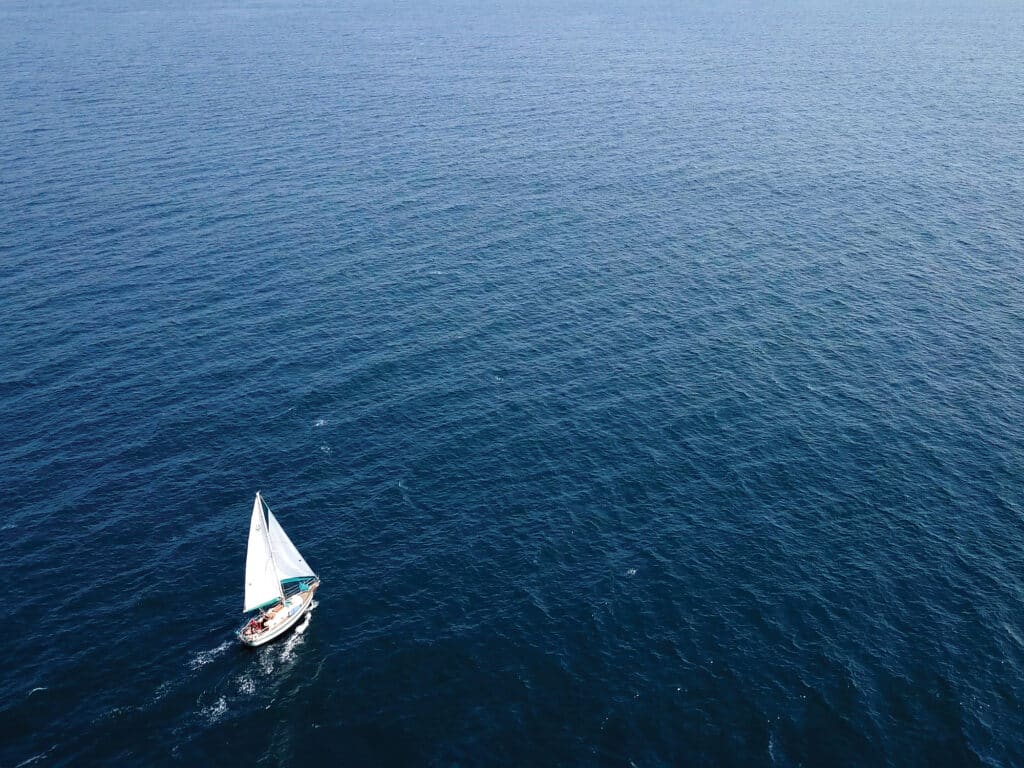
57°38’07.3”N, 18°16’41.9”E
Port of Visby, Gotland, Sweden September 2022
Sidse Birk Johannsen had just settled into an 18-hour journey across the Baltic Sea when her sailboat’s autopilot malfunctioned. Her sails were flapping. The waves were choppy. It was the middle of the night, and, to put it mildly, she was very cold and very alone.
By all accounts, Johannsen’s first solo sea crossing had gone awry. With a sleepless night ahead, a pot of coffee was in order.
If you’re looking for an activity where everything sticks to the plan, stop now and cross sailing off your list. Sails tangle. Water leaks where it shouldn’t. Storms appear out of nowhere. Generators break. Engines fritz.
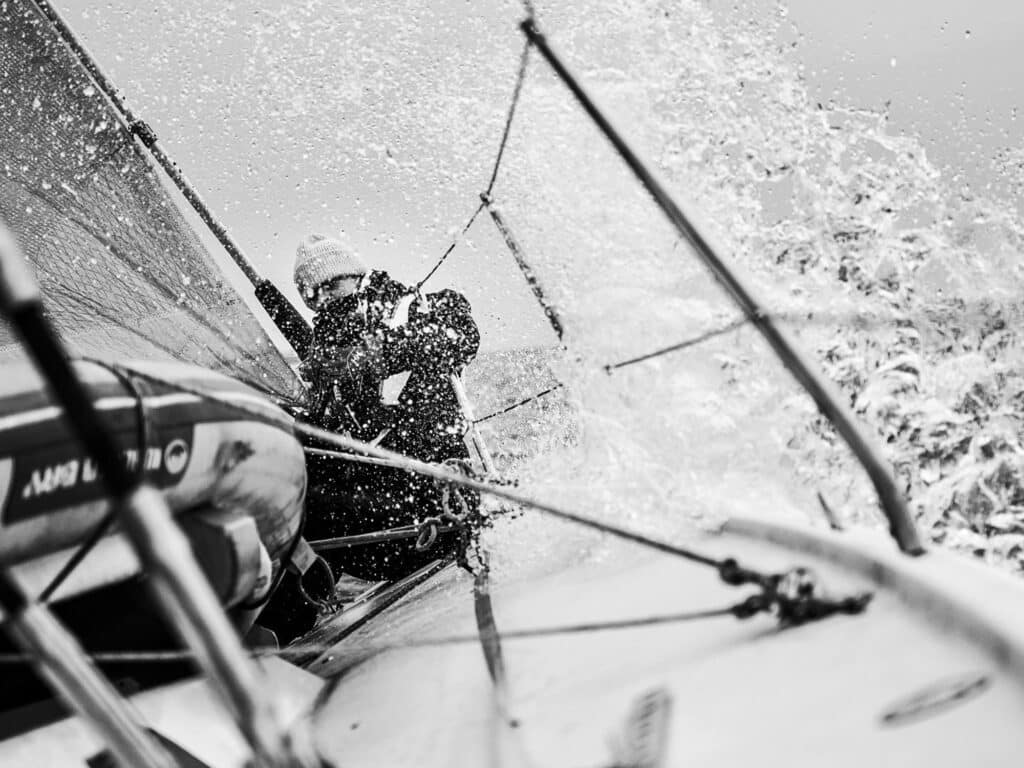
Things go wrong. A lot.
“Sometimes there’s a huge potential in being naive and not knowing what you’re walking into,” Johannsen says. “Because if you knew all the hassle beforehand, you would not do it.”
Five years ago, this 33-year-old Danish sailor’s life took a turn. Working in Greenland as a high school teacher, Johannsen broke up with her boyfriend of seven years. She had nowhere to live, no job. And a pandemic had shuttered the world.
“When life hurts, I run,” Johannsen says. “I go somewhere else. And that wasn’t really possible because of COVID.”
When Johannsen received an offer to work on a boat in Tahiti, she said yes. After a year of working on deck, she wanted more. Johannsen returned to Denmark, where, rather than sign a
lease on an apartment, she bought Anori, a 1976, 31-foot, Swedish-designed B31. The name in the Greenlandic language means “the spirit of the wind that will bring you home safely.”
Johannsen and the community of sailors she would discover fit within a broader story of travel and adventure in our post-pandemic world. But for women like Johannsen, many of whom are new to sailing, their launch out to sea meant joining a male-dominated community—one that frequently calls into question these women’s identities as captains.
21°17’05.7”N, 157°57’35.4”W
Mamala Bay, Oahu, Hawaii April 2020
On the morning of April 17, 2020, Olivia Wyatt woke up anchored off the coast of Oahu. She had recently relaunched her 34-foot Ta Shing Panda, Juniper, after a series of maintenance issues required time in a shipyard. At home in the harbor once again, she was eager to explore the islands by sail.
But that same morning, David Ige, then-governor of Hawaii, issued an emergency pandemic proclamation. It included a ban on more than two people inhabiting a single recreational boat in Hawaii waters, and a requirement that each boat remain at least 20 feet from the next.
“Maybe I’ll just make loops around this island until I’m dizzy,” Wyatt wrote on social media.
Wyatt had arrived in Hawaii eight months earlier, having sailed Juniper 2,269 nautical miles over the course of 23 days from San Diego. Both places were a far cry from Wyatt’s landlocked hometown in Little Rock, Arkansas. Wyatt had learned to sail in her 20s, when she was working as a multimedia journalist in New York City. She received sailing lessons for her birthday from a boyfriend. It was the first time she’d stepped foot on a sailboat.
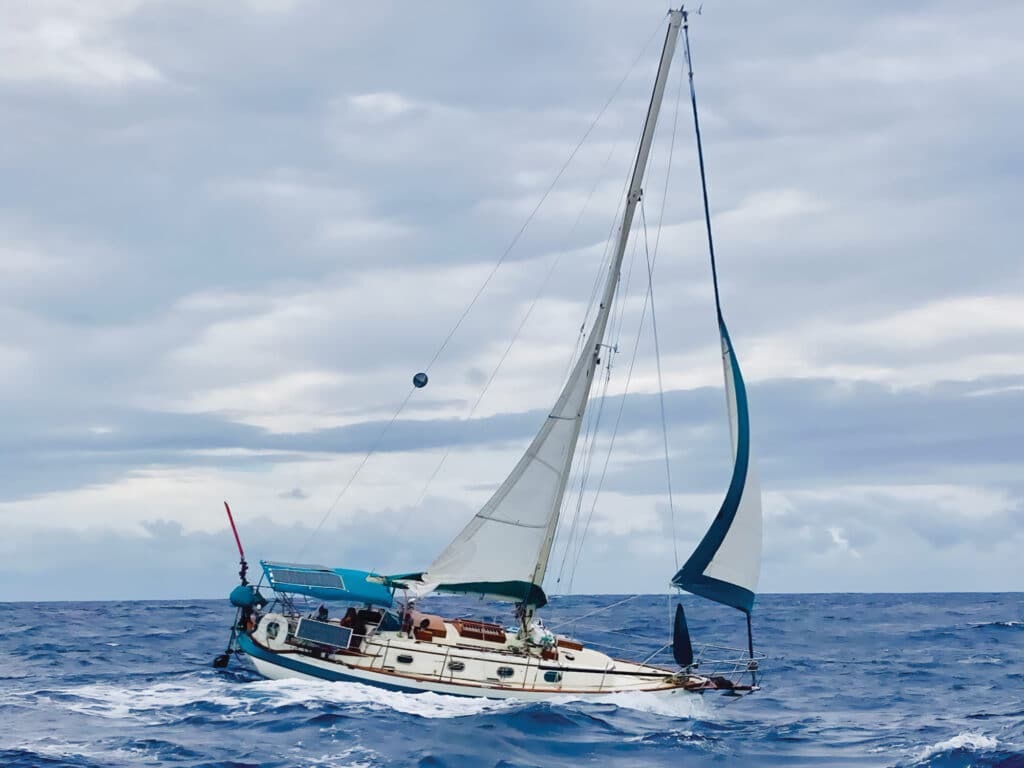
“I just fell in love with it,” Wyatt says. “It’s kind of like a game of chess. It’s unpredictable.”
Wyatt wanted a strapping man to take care of the mechanical work while she braided sailor’s knots and danced on deck. After a string of boyfriends, Wyatt was living in Los Angeles, 34 years old and boatless. “I made a list of all the bluewater boats I liked and began searching for ones that were for sale,” she says. “I narrowed it down to a boat in Mexico, one in Hawaii, and one in San Diego. In the end, Juniper was the one I fell in love with. It was just by chance that it was the closest to me.”
She bought the boat in San Diego and sailed it up to Los Angeles. Six months later, she sailed back to San Diego for work.
“It was there that I met my friend Elana, who had already sailed solo across the Pacific,” she says. “I was considering sailing to Hawaii, and she encouraged me to do it.”
Wyatt spent a year learning her way around Juniper, sailing in Los Angeles and San Diego, and soon realized that she couldn’t fix and do everything herself. Between repairs, she’d sail out each morning, testing Juniper’s limits and quirks, and discovering her own.
If you’re looking for an activity where everything sticks to the plan, cross sailing off your list.
In the 23 days it took Wyatt to sail from San Diego to Hawaii, she found that writing kept her grounded. She experienced frequent auditory hallucinations, hearing questions in the air. Once, she started clapping to the beat of a funk song bouncing off the waves.
“I try to recall the voices of my family now,” Wyatt wrote in a blog post in August 2019. “I want to hold onto those voices and take them with me, and I’m crying uncontrollably because I can’t. Because things like this can fade. Everything can fade and wilt on the vine of time. I can speak out here through satellites. When my ears are thirsty for a human voice, I call my mom, but our connection is distorted by the dance it does through space.”
8°26’18.9”N, 78°59’40.2”W
Pearl Islands, Panama March 2020
Holly Martin forgot to buy eggs. Normally, she would wait until the next grocery run, but she was starting her Pacific crossing from Panama toward Polynesia the next day.
By the time Martin had returned to Panama City to get the eggs, the urban center was under lockdown. Guards were outside the grocery store, forcing customers to enter one at a time.
Sitting in a small boat full of fresh food just off the shore of a city with 1.5 million people, Martin felt uneasy. With her Pacific crossing now off the table due to COVID, Martin had to stay put, so she and a group of 30 or so sailors sailed instead to the Pearl Islands, about 45 nautical miles away.
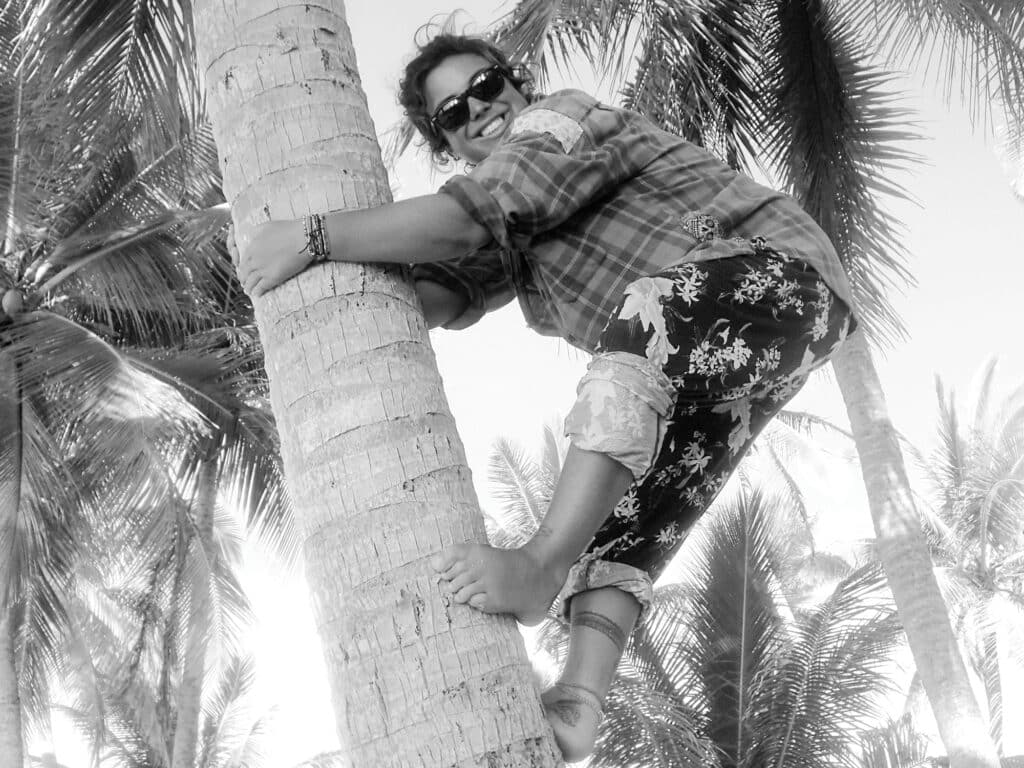
After two months there, Martin heard rumors that Polynesia would open its ports. That August, she set sail for the Marquesas Islands. The winds were calm when she left Panama City. On her second day of what would be 41 days alone at sea, a little gray bird landed on her bow.
“The buildup, it’s like a buildup of a storm,” Martin says in an online video. “And then once you leave, it just breaks, and suddenly, I’m sailing.”
The only communication device Martin had was a satellite tracker capable of receiving 40 texts with 140 characters each month. So, for 41 days, the only news Martin received was weather updates from her mother.
“When I arrived in Polynesia, anything could have happened,” she says. “It could be gone. It could be worse—half the population could be dead, there could be nuclear war.”
She describes her Pacific passage as being like “a very long meditation.” By the second week, she and her boat, Gecko, a 27-foot Danish Grinde, had become a single, mellow entity. Things still went wrong. But when Martin found herself free-climbing her mast in the middle of the night during a squall, she just did it.
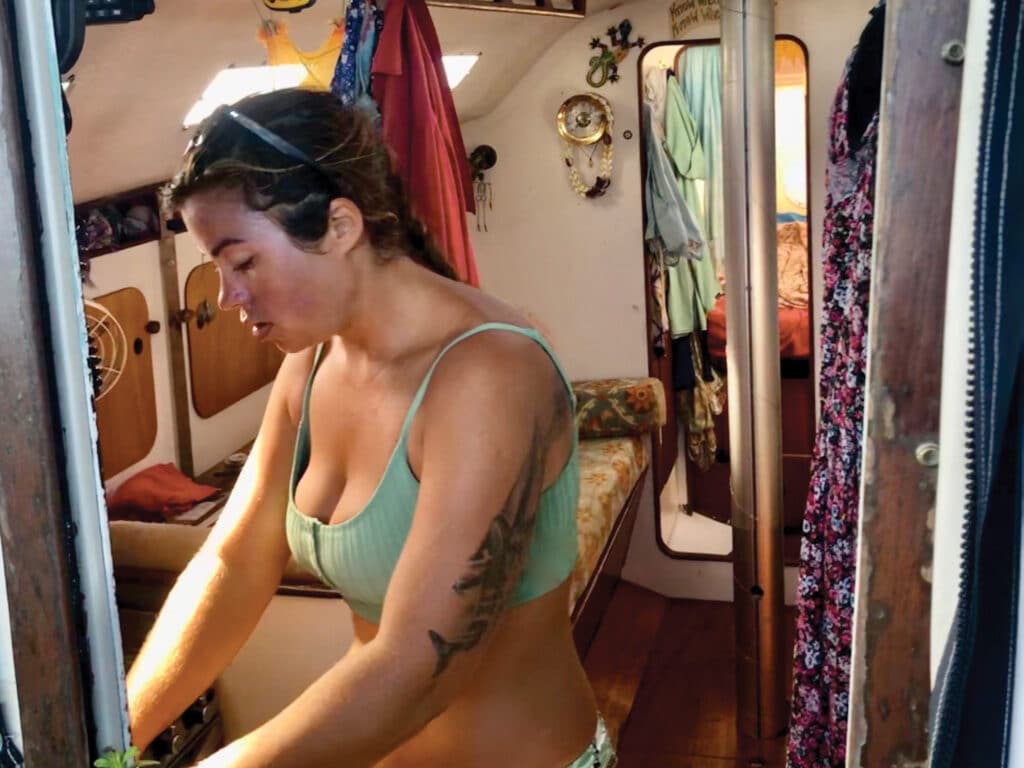
Sailing alone, Martin says, means no one is waiting for you to unravel. And when there’s no one to hold your hand, fear dissipates. Still, Martin says that she also has the space—an entire ocean of it—to air her emotions as they come.
“I’m more likely to cry at a beautiful sunset at sea,” she says. “I think when we don’t have to protect ourselves from the people around us, we can allow our emotions to lie wherever they want to.”
For Martin, sailing wasn’t an unknown when she started her circumnavigation in 2018. In fact, Martin sailed before she could walk. Her parents sailed the world with their three young children for nearly a decade before landing in Round Pond, Maine. When Martin graduated from college in Maine with a degree in marine biology, she took a job on a vessel in Antarctica, working as a research support technician.
“The out-at-sea alone part,” Martin says, “it’s quite irrelevant that I’m a woman.”
After six years of working with a crew, she wanted to learn how to make mistakes on her own. Until a year ago, she avoided inviting friends and family on Gecko. “I’ve spent a lot of weeks on passage thinking about my life and myself and digging in deep,” Martin says. “I feel like I’ve dug enough by myself now that I’m ready to start inviting other people into my world.”
Though not quite as long as her to-dos, Martin also has a list of things she’s learned about herself while sailing alone. For one, she’s given up small talk. Often, silence is better. Martin has also realized that the stresses and burdens that exist on land can vanish at sea.
“The out-at-sea-alone part,” Martin says, “it’s quite irrelevant that I’m a woman.”
38°54’19.6”N, 77°04’06.7”W
Washington, D.C. March 2023
It’s 5 p.m. on Wednesday, March 15, when Wyatt calls me by video. I’m sitting in a basement in Washington, D.C., wearing a wool sweater. She is tan, in a bright-purple tank top, on a boat in Fiji at 9 a.m.
We chat about Martin — one of the few sailors Wyatt knows who is also sailing in the South Pacific— and Johannsen. If you’re thinking, Small world, you’re right. But the world of solo female sailors is also tightknit, despite these women sailing hundreds, even thousands, of miles apart.
Wyatt, Martin and Johannsen connect on social media and ask questions about their latest boat malfunctions. When Martin was in New Zealand preparing for a Pacific crossing and needed a sewing machine, she posted a request online. Turns out, someone at the Richmond Yacht Club in Auckland had exactly what she needed.
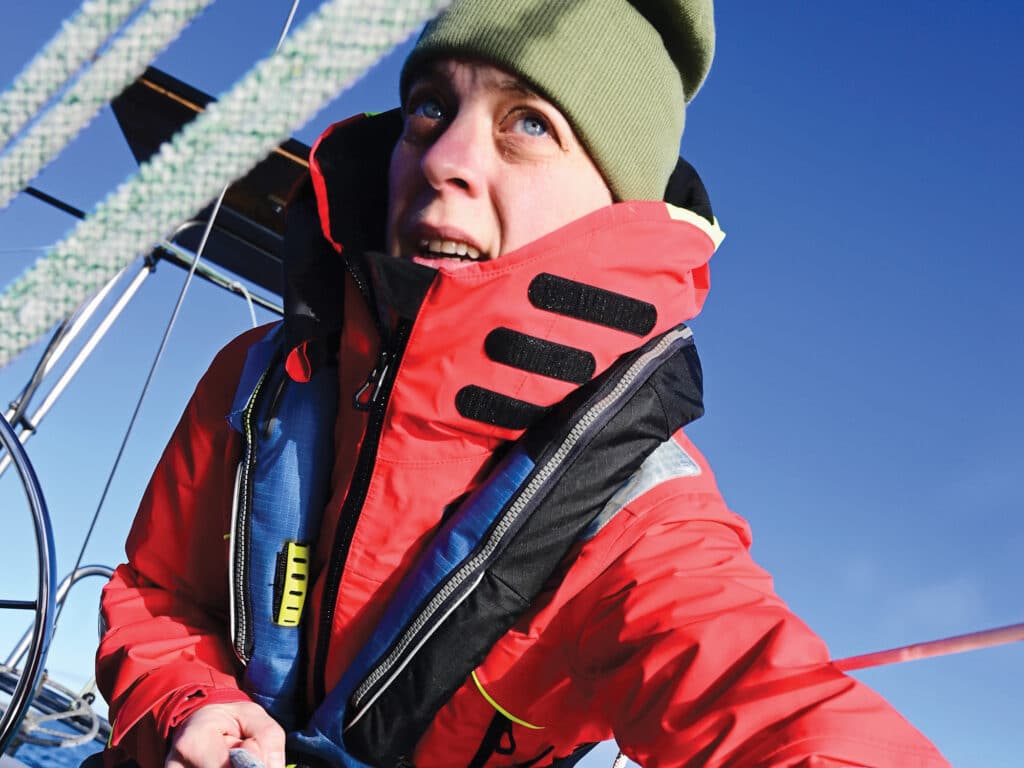
Wyatt and Johannsen have similar stories. The sailing world, Johannsen says, is about finding a balance between trying to take care of things yourself and admitting when there is something you do not know.
Back in the spring, Johannsen walked down the dock in Egå Marina, in Aarhus, Denmark, and approached a neighboring boat where a group of men chatted. They’d spent the past 40 years sailing.
“Having this kind of connection is a huge value for me because it means I can call them and they can tell me what it means to buy a kind of boat,” she says. But, other times, Johannsen adds, “I want to be the one with the tools in my hands.” And if she doesn’t know what she’s doing, her followers online usually have the answer.
If Johannsen’s female sailing followers have anything in common, it’s their camaraderie about broken engines, ripped sails, delayed starts, bad weather and mansplaining. Wyatt too: “All of the women who I’ve met along the way, we’re so similar,” she says. “It’s hard because you’re making all these decisions by yourself, and something is always breaking. It’s a financial burden. It’s a mental burden. It’s a weight.”
Martin says that they feel like sisters: “It’s just this unique community of people going through it all together. We have the same struggles.”
57°24’04.6”N, 21°32’27.3”E
Ventspils, Courland, Latvia September 2022
Out in the dark water of the Baltic Sea, Johannsen really had only one option. One way or another, she had to get her boat across the remaining 87 nautical miles between her and the Latvian coast. Her autopilot was broken. She had to hand-steer.
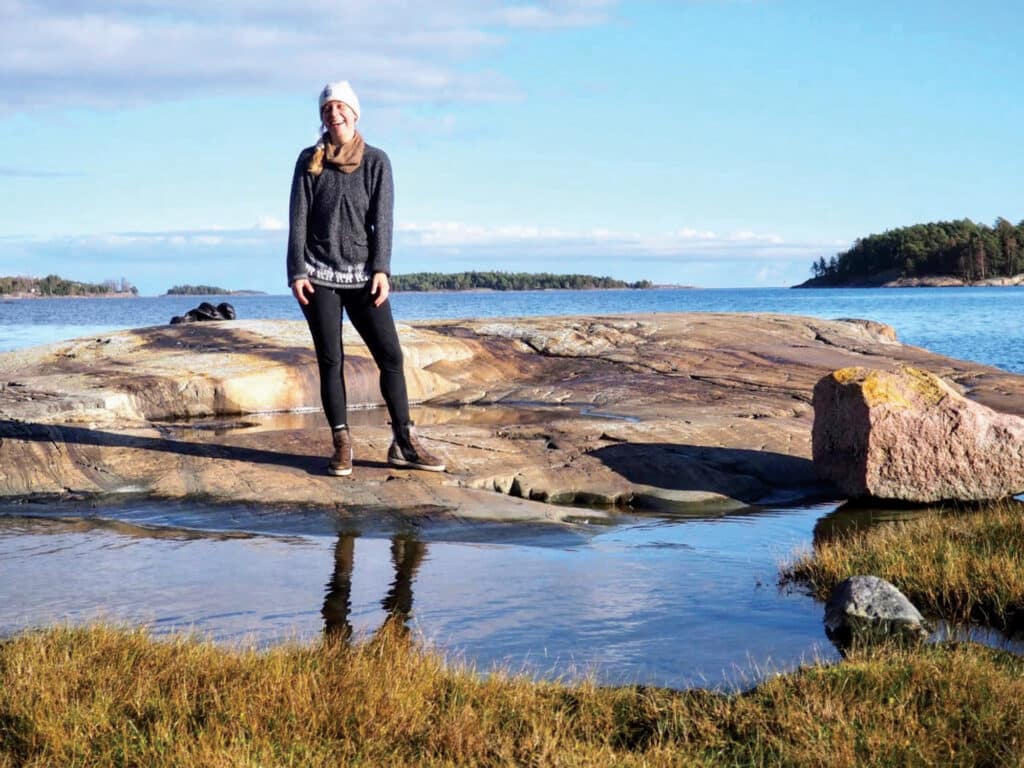
When Johannsen docked Anori in Ventspils, a deepwater seaport, she knew that she’d have no problem falling asleep. After 18 hours of focus, she could allow herself to feel everything she had kept at bay for those long, cold hours. There is no room for fear, she says, in moments of discomfort or danger. But allowing yourself to feel those emotions after the fact, on land, is essential to staying sane.
“You need to take those feelings seriously, because otherwise, they will build up in your body,” she says. “Your body will remember to be scared or very, very cold. It can turn your brain into oatmeal.”
And, alone on a boat only 34 feet long, extra baggage simply doesn’t fit.
Follow these solo sailors online
Sidse Birk Johannsen: @sisi_atsea on Instagram
Olivia Wyatt: wildernessofwaves.com, @wildernessofwaves on Instagram
Holly Martin: @windhippiesailing on YouTube, @boatlizard on Instagram








